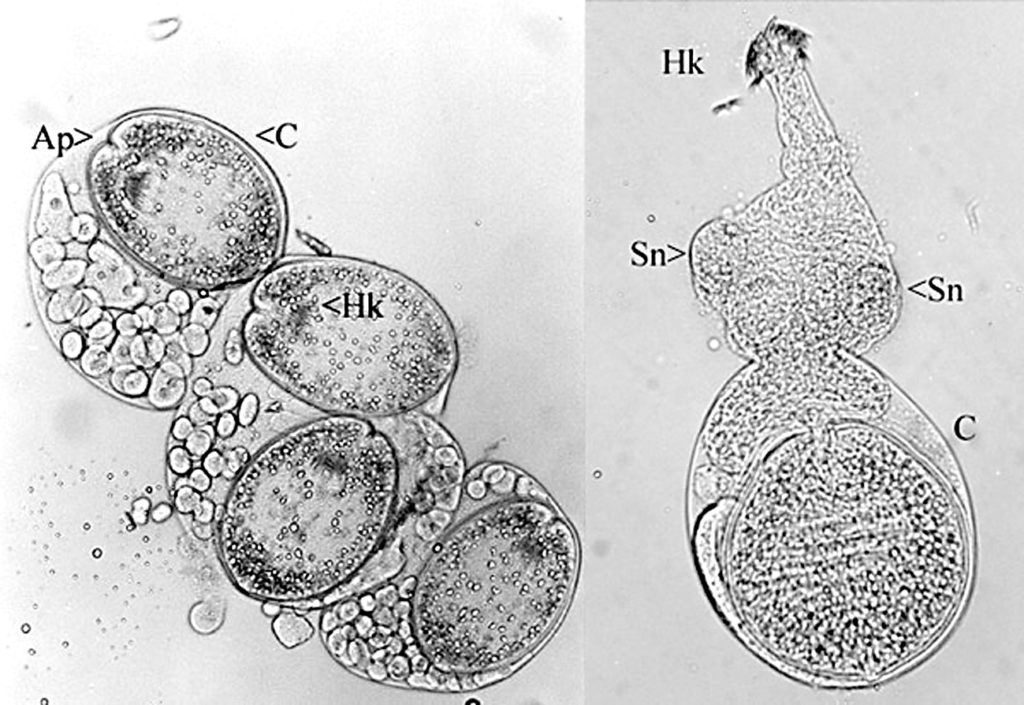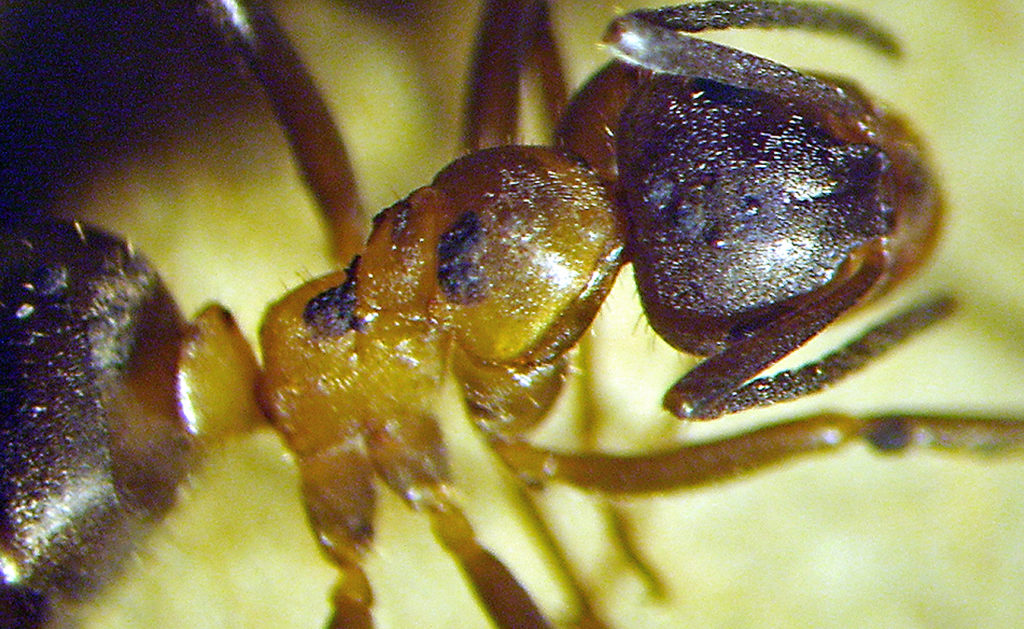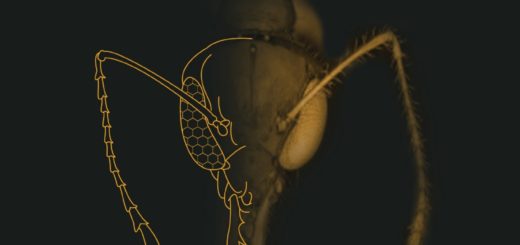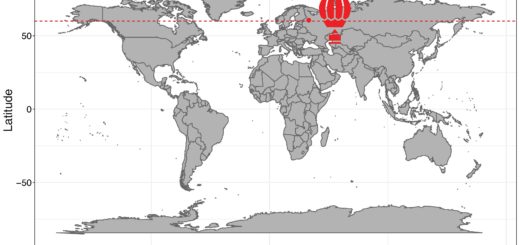Interview with Alfred Buschinger

Alfred Buschinger, born in June 1940, is myrmecologist, and in his research, he focused on social parasitism, queen polymorphism, and polygyny in various ant species. Even after his retirement in 2005, he has continued working on ants and published multiple papers. In this interview, we talk about his career, funny and irritating moments, and what he enjoys about ant research.
An Interview compiled by Patrick Krapf

MNB: Could you tell us a bit about yourself?
AB: I was born in Würzburg, Germany, in June 1940, where I also went to school. I studied biology, chemistry, and geography at the Julius-Maximilians University until I got my PhD in 1967. I worked in the lab of Professor Gößwald on “Occurrence and consequences of mono- and polygyny in ants of the genus Leptothorax”. Afterwards, I worked as a scientific assistant at the Institute of Applied Zoology at the University of Bonn. In 1973, I was appointed Professor of Zoology at the Institute of Zoology of the “Technische Universität Darmstadt”, where I worked until my retirement in 2005. I am married, have three children, and five grandchildren. I like hiking, swimming (preferably in rivers, lakes, or in the sea), gardening, and travelling.
MNB: Could you tell us about your research?
AB: I have been studying the social organization of ants, polygyny, social parasitism, and queen polymorphism (i.e., the different morphs of mated female reproductives, such as gynomorphic [MNB: gyne shaped], intermorphic, and ergatomorphic [MNB: worker shaped] queens). Dissection of even very small specimens turned out to be an easy and highly effective technique for determining whether dealate gynes, intermorphs, or even ergatomorphs in fact are mated and have sperm in their receptacles. Moreover, the condition of the ovaries, their size, presence of growing eggs, and corpora lutea indicate the reproductive function of female ants. True polygyny means the coexistence of two or more fully fertile queens in a colony. In the literature, sometimes colonies with dealate but virgin gynes alongside one queen were erroneously diagnosed as being polygynous. The error can be avoided by dissecting the gynes of entire colonies.
Highly important for my research was the successful breeding of a couple of species over up to five generations in captivity, including crossbreeding of a few parasitic species, demonstrating their close relationship. An important discovery was the fact that daily temperature rhythms, both in the summer and during hibernation, were favourable for rearing ants from temperate zones, particularly for leptothoracine species. I was able to reduce the annual cycle down to approximately four months in Leptothorax and Harpagoxenus, allowing the rearing of up to three sexual broods within one year. Crossmating the sexual offspring of the two queen morphs in Harpagoxenus sublaevis proved a genetically-mediated queen polymorphism in this species. Later, the same result was obtained with a few other species, for example, Myrmecina graminicola.
Another highlight was the stepwise uncovering of the evolution of active slavemakers into workerless “degenerate slavemakers” in the parasitic genus Myrmoxenus and, convergently, a similar evolution in Chalepoxenus, both genera comprising close to a dozen species each. They all were synonymized by Ward et al. (2014) under the genus Temnothorax (which also contains the host species); unfortunately, the parasites thus were dispersed among several hundred independently founding species.
Another field of interest was the social parasites of Tetramorium, their life history features, ranges and the relationships between the parasites and their hosts. We collected and studied the very rare workerless Teleutomyrmex schneideri (= Tetramorium inquilinum), Anergates atratulus (= Tetramorium atratulum), and a couple of species of the slavemaking genus Strongylognathus (about 25 species), of which at least one, S. testaceus, is a degenerate slavemaker.
A particular highlight was the study of Polyrhachis lama in Java, in cooperation with Prof. Ulrich Maschwitz. This formicine lives as a social parasite in mixed colonies with Diacamma sp., a ponerine. Digging out complete colonies, we soon found out that there were numerous colonies with Polyrhachis workers and Polyrhachis brood, even young Polyrhachis sexuals, but a Polyrhachis queen was living in only a small fraction of the colonies. Dissection of Polyrhachis workers revealed that they were neither mated (had no spermathecae) nor egg laying. The hypothesis was that Polyrhachis workers with eggs and/or small larvae left from the queenright mother colony, carried the brood into neighbouring nests of the Diacamma hosts, and reared the larvae with food they obtained from the hosts. The hypothesis proved true. It is an enigma how the Polyrhachis workers gain access to the Diacamma colonies. But later, we found a similar relation of Polyrhachis loweryi with a large Rhytidoponera sp. in Australia. Further studies involved various ecto- and endoparasites of ants, such as cysticercoids of tapeworms in Leptothorax and Temnothorax ants, and others.
Finally, I am engaged in the “Deutsche Ameisenschutzwarte” (German Association for the Protection of Wood Ants). The mound-building wood ants of genus Formica (s. str.) with their impressive thatch mounds belong to the endangered species. The DASW mainly tries to rescue colonies that are threatened by road construction and other land-consuming activities.

MNB: Wow, that is so interesting and diverse! And how did you end up studying ants?
AB: As a young boy, I was fascinated by both plants and animals. So I decided to study biology. My preference became zoology. At the University of Würzburg, there were only few professors, and the one whose field of interest was most appealing, professor Dr. Karl Gößwald, was working on wood ants. He was also the one who inspired me to pursue a career in myrmecology. He asked me what I would prefer, working in the lab or in the field? I replied: field! Next question was: forest or open areas? The latter. So, he suggested I do something with Leptothorax (the genus at that time comprised both Leptothorax and today’s Temnothorax). Having found my first colony of a Temnothorax species, I fell in love with these ants: An entire colony, with queen, workers, brood, in a nest of the size of my palm! And it was easy to collect and to study numerous living colonies of several species. Of course, it was good luck that in my later career as a biologist I was able to continue studying ants. So he became my supervisor. I am much indebted to my friends and colleagues among the PhD candidates of Gößwald, among them Bert Hölldobler, for our frequent and thorough discussions of our plans, experiments, and observations, in both a critical and highly stimulating manner. I am also very grateful to Heinrich Kutter and several other renowned myrmecologists for having encouraged and supported me from the beginning of my career.
MNB: And what is your motivation for doing ant research now if you still do research?
AB: I have practically stopped doing research, though I am still very interested in reading the papers of the younger colleagues. Occasionally, I am able to help with my experience and knowledge of literature.

MNB: What was the biggest obstacle you had to overcome in ant research?
AB: Raising funds for field trips, for PhD candidates, and for paying students as helpers who had to look after my numerous ant colonies. I received a considerable number of grants from the “Deutsche Forschungsgemeinschaft”, for which I am very grateful.
MNB: Understandable, grants are always welcome. And during your research, has there been a funny moment?
AB: There were many. But I remember with pleasure numerous funny occasions with colleagues at meetings and congresses as well as during fieldwork. For instance, the young student who planned to collect many ant samples and once he was in the woods, he realised that although he had an aspirator and several hundred cork stoppers, he did not have a single vial! (Later, he became a famous myrmecologist, though).
MNB: Oh, wow. Well, such things can happen to all of us … And have there been any scary moments?
AB: It happened during ant hunting in Québec, Canada, in 1979. I was looking for Harpagoxenus canadensis among rock boulders with open vegetation that were scattered in a very dense spruce forest. Passing from one boulder to the next between the trees, I lost my way. Although the area was situated between a railway and a curved road, it took me quite some time to find a way back to the car through this forest!

MNB: I bet you were a little bit scared. And what was the most irritating moment?
AB: In 1986, I was with a few students in Algiers searching for rare parasitic ants. I was the driver of a Volkswagen-bus that was property of the University of Darmstadt. We went by ferry from Marseilles to Algiers, and in the first night in a hotel at Blida, the car was broken into, and a number of important items from our belongings were stolen. All locks of the car except for one were destroyed and no longer opened with the key. Entering and getting out of the car was quite difficult. The repair of the broken window at Blida was a terrible experience. Nevertheless, we were able to continue the trip and collect sufficient ants (Myrmoxenus algerianus; = Temnothorax algerianus) for studying their life history.
MNB: At least you could go on with your trip. Was there also a moment you enjoyed most?
AB: Again, there were many. One example: The parasitic Myrmoxenus ravouxi (= Temnothorax ravouxi) had been thought to be a “degenerate slavemaker”, retaining a quite numerous though useless own worker caste. A former student, Ursula Winter, wouldn’t believe that and put a colony of the species into one of our arenas for studying slave raids together with a colony of the host species. When I returned from a field trip, my student reported that the ants had raided the host colony, applying group recruitment, a feature previously unknown in European leptothoracine slavemakers! The next day, we were able to reproduce the experiment and take pictures. Later, we found this behaviour in most of the other Myrmoxenus species, except for the secondarily workerless M. corsicus (= Temnothorax corsicus) and M. adlerzi (= Temnothorax adlerzi).
Another great moment was our rediscovery of Myrmoxenus corsicus on the French island of Corsica. A single wingless gyne had been found somewhere on Corsica by a beetle collector in the 19th century. This gyne had been described by Emery in 1895 as “Formicoxenus corsicus” and was transferred by him to Epimyrma in 1915; nothing more had happened until 1982. The morphology of the gyne suggested a parasitic life, but neither host species nor the exact site was known. In March 1982, I set out, together with a couple of devoted students, to search for this species. For nine days, we travelled around the island, found Myrmoxenus kraussei (= Temnothorax kraussei) and M. ravouxi for the first time in Corsica, but no M. corsicus. It was our last day before we had to depart by ferry, and we were close to giving up, when I detected a first colony beneath a pebble of approximately 5 cm on the ground: A tiny black gyne among a few tiny black Temnothorax exilis workers! – I shouted for my companions, and during the afternoon, we collected a total of 18 colonies. With the background of what we already knew of Myrmoxenus, we were able to reconstruct its complete life cycle. There were colonies containing an M. corsicus queen and a few dealate, mated, but not yet egg-laying gynes. In other nests, there was just one young queen, and in two colonies, the M. corsicus was throttling the T. exilis queen. No Myrmoxenus workers were found. Hence, the sexuals of M. corsicus mate in the mother nest, shed wings, hibernate there, and in the following spring, they search for colonies of the host species where they throttle the queen to death. With the aid of the host workers, a sexual brood is produced. – We checked other populations in Croatia that had been found earlier, but not published, by my late friend Walter Faber, and we could confirm our observations both in the field and in lab culture.

MNB: Great! And what do you enjoy most about ant research?
AB: The very high number of ant species and their incredibly diverse shapes and life histories. I prefer species with small colonies of which a high number can be kept in formicaries of just 10 cm x 10 cm x 3 cm size. Mating behaviour of several species, independent and parasitic colony founding, slave raids of dulotic species [MNB: parasitic ants which steal pupae from the nests of other ants and raise them in their own nest, so that they become part of the colony and perform tasks in it]; all these aspects of ants can be studied in arenas and small formicaries in the lab. Most features could be compared among a couple of related species, and often it was possible to confirm the lab results with observations in the field, or vice versa.
MNB: If you had not become a myrmecologist / entomologist, what else would you have liked to become?
AB: I was fascinated by plants, and I also liked studying reptiles and amphibians. I can also imagine having made a career in these fields.
MNB: Is there one thing you wish everyone knew about ants?
AB: That there are so many species, more than 110 even in the comparatively small Germany, all differing in details of phenotype and behaviour. Most people apparently think that all ants are alike, and that they are mainly annoying pests.




MNB: So true. Slightly different topic now; what are the main differences regarding research when you started as a myrmecologist compared with today?
AB: A lot of things have changed during the past 50 years. New methods and techniques have been developed, biochemistry, DNA-sequencing, scanning electron microscopy, micro-computed tomography, video-recording, and elaborate statistics. W.D. Hamilton achieved very important progress with the kin selection theory. In the very last decades, simple (which doesn’t mean easy!) life-history studies seemingly have decreased in numbers. My impression is that a high proportion of contemporary myrmecology concentrates on systematics and evolution, using DNA-sequencing, biochemical analyses, and very elaborate measurements of morphological features for delimitation and description of ever more species. However, myrmecology is more than that! For numerous species, I miss studies of behavioural features, how they fit into the ant community and into the ecosystems, which are important determinants of biodiversity. A frequent phrase in descriptions of cryptic species is “Little (or nothing) is known of its life history”. Somehow, the approach to scientific problems seems to have changed direction: At the beginning of my research, the aim was mainly to figure out how and where these insects live. Having revealed the life histories, we used to discuss the adaptive value of the features we had recorded. In recent times, I often observe that colleagues construct a question in the sense of “How should an organism cope with competition, parasitism, adverse climate, etc.” Then they search for organisms in which these questions could be investigated. An example is the search for the evolution of defensive strategies of ant slave species against their slavemakers. We should not forget that behavioural features underlie evolution and selection, as do morphological characters, and that they have a genetic basis, too.
MNB: Do you have any suggestion for myrmecology-newbies?
AB: Read ant literature as much as you can, beginning with popular but scientifically correct treatises, proceeding with more specialized themes. Try to find a myrmecologist for personal instruction in the field and in identification of species. Anyhow, you have to study biology, zoology, entomology, and finally you can specialize on ants. The great difficulty will be to find employment, though.
MNB: That is really a good advice. What would you do differently if you could start all over again or would you do something differently?
AB: Nothing, under the conditions at the times when I started. Probably everything under the current conditions. The mainstream research has become very complicated, with lots of sophisticated equipment and statistics. Perhaps I would try to work at a zoo or a botanical garden.

MNB: Working at a zoo or botanical garden would be nice too! Is there one question you are asked most often when people hear you work with ants?
AB: Ants? Why? Are they useful or a pest? How can I get rid of the ants in my home?
MNB: By the way, how do you protect your kitchen against ants?
AB: I don’t need to, fortunately. Only once, I had a visit of Lasius brunneus, the by far most frequent house-ant in Germany. I traced their ways to small gaps in a wall, injected an insecticide, and closed the gaps with silicone.


MNB: What’s your favourite ant?
AB: Harpagoxenus sublaevis.
MNB: What’s the book on your bedside table?
AB: None; I prefer to sleep in bed. But currently, I am reading the new book by B. Seifert (2018): The Ants of Central and North Europe.
MNB: Watching sports or doing sports?
AB: None. I prefer gardening and hiking.
MNB: Evening or morning?
AB: Evening.
MNB: Tea or coffee?
AB: Beer and wine.
MNB: Sugar or sweetener?
AB: Sugar.
MNB: Aspirator or forceps?
AB: Both, depending on the purpose.
MNB: Nest densities or pitfall traps?
AB: Nest densities.
MNB: Field or lab?
AB: Field.
MNB: Pin or ethanol?
AB: Ethanol.


MNB: Paper reprint or pdf?
AB: Nowadays, pdf.
MNB: Kin selection or group selection?
AB: Kin selection.
MNB: Monodomy or supercoloniality?
AB: Monodomy.
MNB: Worker or queen?
AB: Functional queen.
MNB: Thank you so much for this great interview!

References
Ward, P.S., Brady, S.G., Fisher, B.L. & Schultz, T.R. 2015: The evolution of myrmicine ants: phylogeny and biogeography of a hyperdiverse ant clade (Hymenoptera: Formicidae). – Systematic Entomology 40: 61-81.
But see: Seifert, B., Buschinger, A., Aldawood, A., Antonova, V., Bharti, H., Borowiec, L., Dekoninck, W., Dubovikoff, D., Espadaler, X., Flegr, J., Georgiadis, C., Heinze, J., Neumeyer, R., Ødegaard, F., Oettler, J., Radchenko, A., Schultz, R., Sharaf, M., Trager, J., Vesnić, A., Wiezik, M. & Zettel, H. 2016: Banning





A very, very good interview